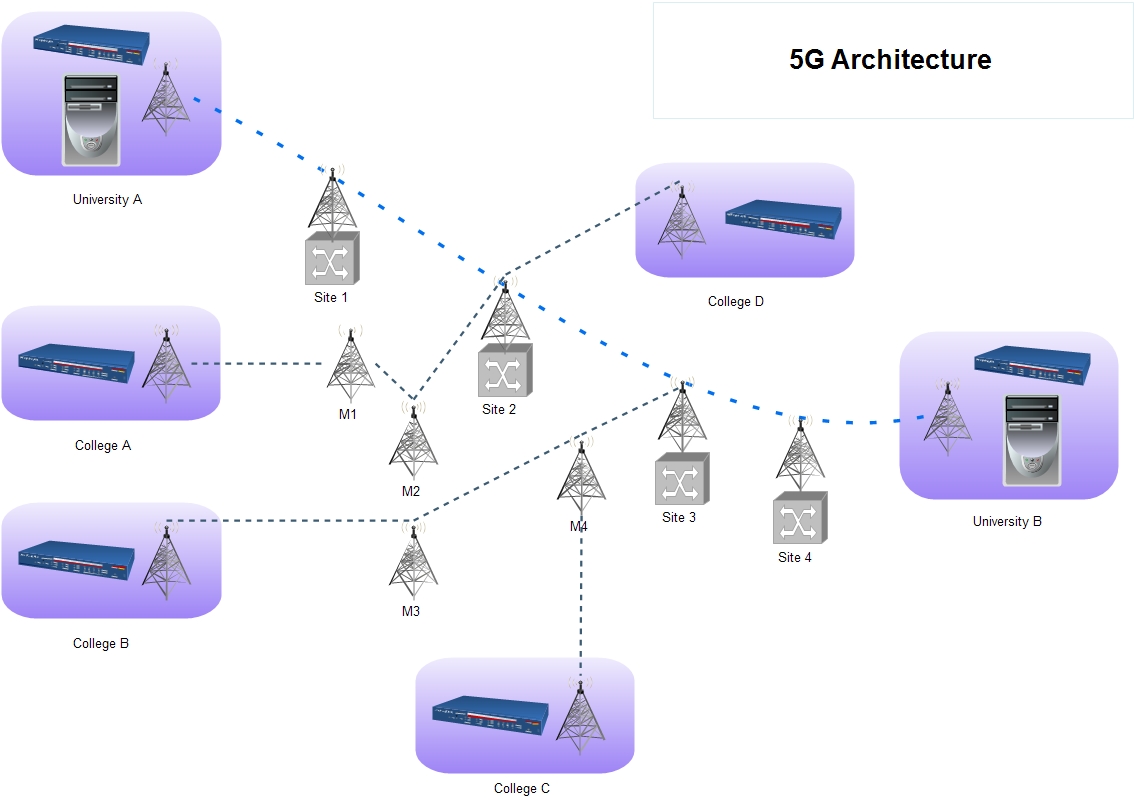Previous generations of mobile networks’ primary aim were to provide network users with fast, dependable mobile data services. The spectrum of 5G has grown to provide a wide variety of wireless services provided to end-users through multiple connectivity channels and multi-layer networks.
5G’s architecture is cutting-edge; the network components and multiple terminals have been upgraded to meet a new situation. Similarly, service providers can quickly incorporate value-added services using advanced technologies.
5G is a complex, cohesive, and adaptable platform of emerging technologies that can accommodate a wide range of applications. Radio Access Networks (RANs) are no longer limited by base station proximity or complex infrastructure in 5G due to a more intelligent architecture. With new protocols providing additional data access points, 5G opens the way for dis-aggregated, scalable, and virtual RAN.
On the other hand, Upgrade ability is based on cognitive radio technology, which involves a variety of important features such as the ability for devices to recognize their geographical location and weather, temperature, and other variables. Cognitive radio technology functions as a perceptive transceiver (beam) to detect and respond to radio signals in its operating environment. Furthermore, it quickly detects changes in its environment and reacts appropriately to ensure continuous, high-quality service.
Architecture of 5G
The physical construction of 5G-specific hardware and infrastructure and the engineering design that defines how the network transmits data are also included in the 5G network architecture.
 Some people confuse “5G towers” with “5G small cells” or “5G nodes.” These are essential components of network infrastructure, as they help expand 4G LTE coverage and capacity when preparing for the deployment of the 5G Ultra Wideband Network. Small cells are wireless transmitters and receivers used to protect smaller areas with the network coverage. Small cells help deploy the high-frequency millimeter waves of 5G to more heavily populated areas, including suburbs, and high-power “macro” towers help keep network signal powerful over vast distances, as they did for 4G and earlier.
Some people confuse “5G towers” with “5G small cells” or “5G nodes.” These are essential components of network infrastructure, as they help expand 4G LTE coverage and capacity when preparing for the deployment of the 5G Ultra Wideband Network. Small cells are wireless transmitters and receivers used to protect smaller areas with the network coverage. Small cells help deploy the high-frequency millimeter waves of 5G to more heavily populated areas, including suburbs, and high-power “macro” towers help keep network signal powerful over vast distances, as they did for 4G and earlier.
The radio access network and 5G new radio are two other components of the 5G architecture. The radio access network (RAN) allows end-user devices to run on a publicly licensed spectrum to connect with other end devices or networks over wireless channels. Antenna towers are usually linked via fiber to base stations fitted with radio and baseband functional elements that can be combined into a single unit or divided into individual units.
 Dinesh Thakur holds an B.C.A, MCDBA, MCSD certifications. Dinesh authors the hugely popular
Dinesh Thakur holds an B.C.A, MCDBA, MCSD certifications. Dinesh authors the hugely popular